NATIONAL AIRLINES DC-6, FLIGHT
470
EN ROUTE FROM MIAMI - TAMPA - NEW ORLEANS
ON BOARD: 41 PASSENGERS AND A CREW OF 5
AT APPROXIMATELY 5:10PM ON FEBRUARY 14, 1953
FLIGHT 470 CRASHED INTO THE GULF OF MEXICO,
APPROX. 16 NAUTICAL MILES FROM MOBILE ALABAMA
THERE WERE NO SURVIVORS
|
|
|

Mobile,
AL DC6 plane crash, Feb 1953
Lightning May Have Caused DC6 Crash
The
Big Spring Daily Herald, Big Spring, TX 15 Feb 1953
MOBILE, Ala. (AP) - A waterspout
or a bolt of lightning may have knocked a National Airlines DC6 out of the
sky into the Gulf of Mexico 44 miles southeast of here Saturday.
These were two of the theories being raised as civil aeronautics and airline
investigators sought an explanation today for the crash that killed possibly
all the plane's 46 passengers and crewmen.
A sea-air search for 29 missing was resumed at daybreak after darkness brought
a halt last night.
Relatives and friends resumed the grim, slow task of indentifying the mangled
bodies of 17 dead brought here by the Coast Guard cutter Blackthorn yesterday.
Seven of the dead passengers
were identified by Coroner Thomas B. Henderson:
J. W. Womer, 3015 Meute Dr., Wichita, Kan.
Mrs. M. D. Graham, Port Neches, Tex.
F. A. Thomas, 4423 Manning Lane, Dallas, Tex.
R. B. Friedman, Miami.
Mrs. Alfred C. Bergamn, St. Petersburg, Fla.
Mrs. J. W. Womer, 3015 Meuto Dr., Wichita, Kan. (tentative).
Mrs. F. Solomon, Miami Beach, Fla. (tentative).
Mobile weatherman Bill Tilson suggested the possiblility the plane could
have hit a waterspout generated by changing weather conditions in the
upper gulf.
Coroner Thomas B. Henderson said some of the bodies were burned without
any further evidence of a general fire or explosion and this suggested
the possibility the craft may have been struck by lightning.
Capt. E. J. Kershaw, vice president in charge of operations of National,
suggested that the plane could have encountered localized "tornado
conditions" in flight.
|
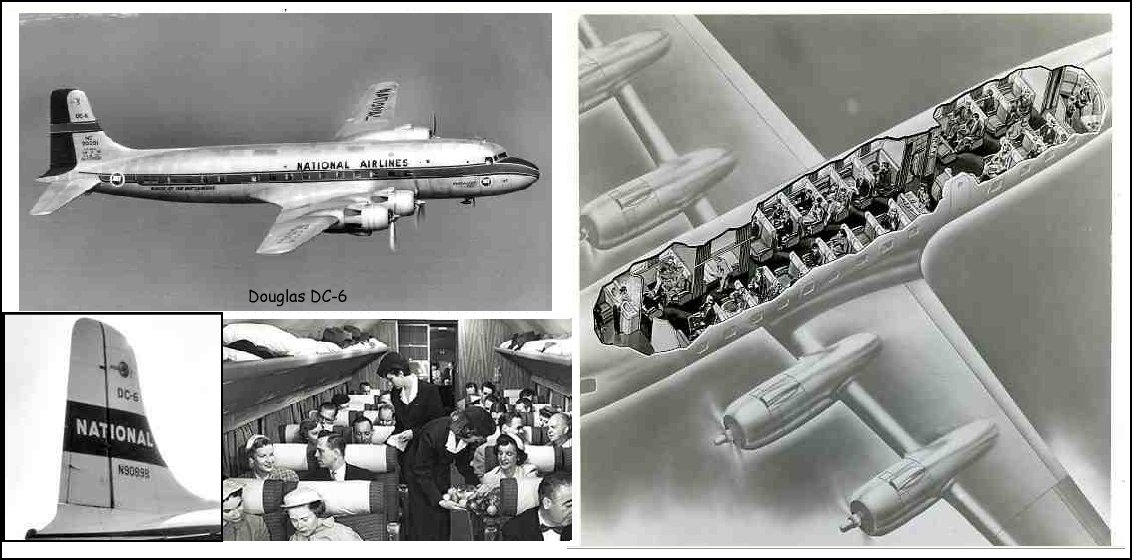
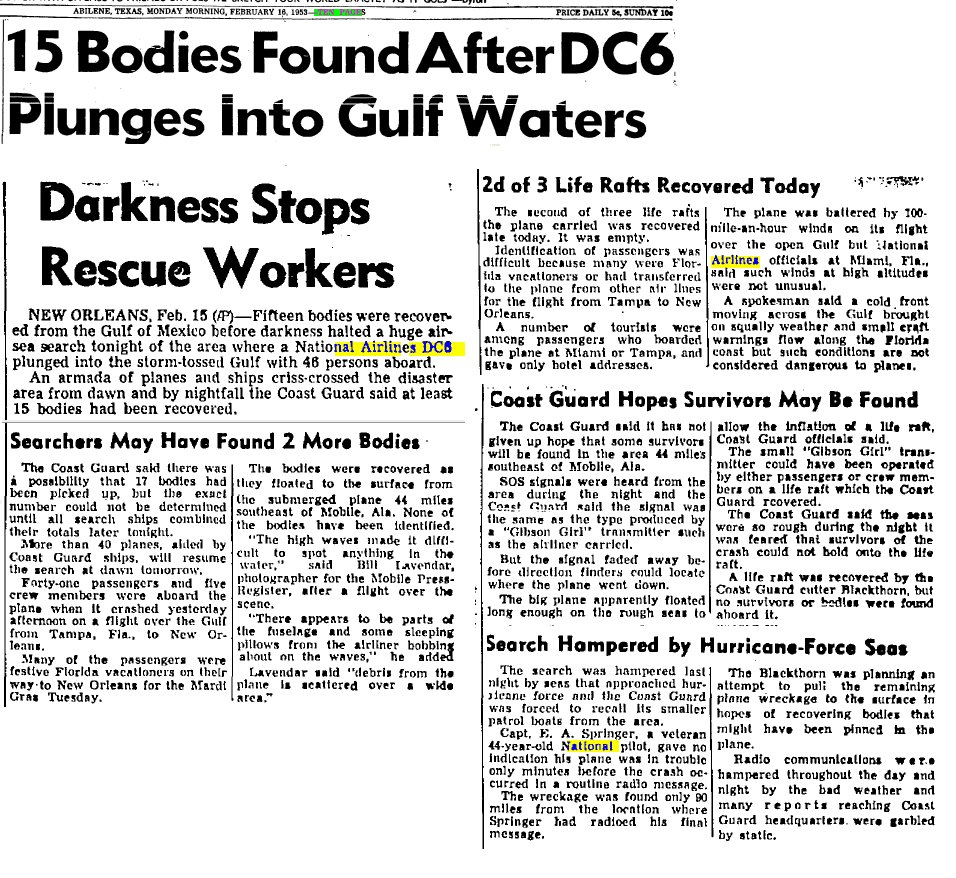
 |
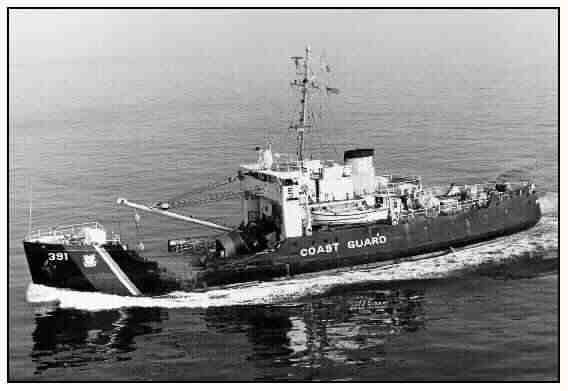
U.S. Coast Guard
Cutter Blackthorn on 18-25 February 1953, she searched
for survivors of National Airlines Flight 470. Between May and June
1953
Blackthorn recovered the wreckage of the National Airlines plane
|
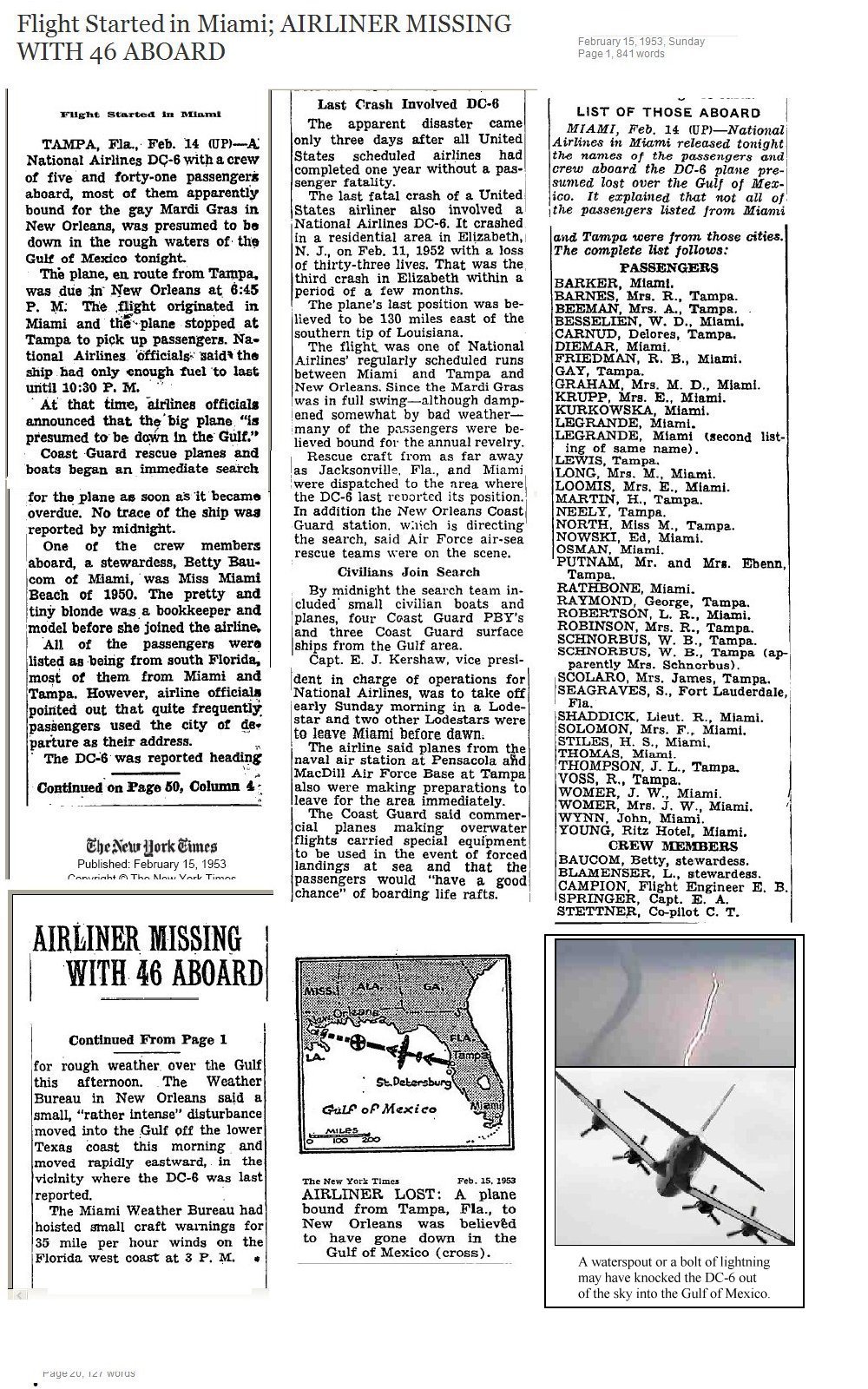
|
"Mobile weatherman Bill
Tilson suggested the possiblility the plane could have hit a waterspout
generated by changing weather conditions in the upper gulf.
Coroner Thomas B. Henderson said some of the bodies were burned without
any further evidence of a general fire or explosion and this suggested
the possibility the craft may have been struck by lightning."
At 16:49, Flight 470 reported passing over NA-2
check point at 16:45 at 14,500 feet, and estimated being over NA-1 at
17:10. It also reported, "Thunderstorms all quadrants".
Pensacola radio received and acknowledged this message, and advised that
"severe turbulence" had been reported
by a DC-6 crew that had landed ahead of Flight 470.
FROM A SPECIAL REPORT BY ABC NEWS: On average,
each commercial airplane gets struck by lightning once a year. "We'd like
to believe today that lightning cannot take down an airplane," said Andy
Plumer, chief engineer at Lightning Technologies in Pittsfield, Mass.
"But in the past, it has happened." From the
1940s to the 1960s, Plumer said, "there were plane crashes, there were
fuel tank explosions, there were effects on electronic systems … and that
happened more frequently than we care to remember." The NASA
Storm Hazards project flew into nearly 1,500 thunderstorms and experienced
more than 700 lightning strikes. To protect commercial aircraft from lightning
strikes -- particularly as the technology changed -- they needed to know
where lightning would strike airplanes, how often, and how much electric
current it carried. In the process, Fisher discovered something shocking.
"Almost all lightning strikes to aircraft are triggered by the aircraft's
presence." The next generation of aircraft will be made of carbon reinforced
plastics, which, while lighter and stronger, do not conduct electricity
as well as metal. To keep planes safe from lightning, engineers have to
develop new methods to diffuse that destructive force. In one case, adding
a layer of copper mesh to the hull of an aircraft can protect it from
lightning. The copper mesh is "very thin, very lightweight," said Plumer,
"but it provides an amazing amount of lightning protection." Thanks in
large part to these efforts, no commercial airline has crashed in the
United States because of a lightning strike since 1963.
|
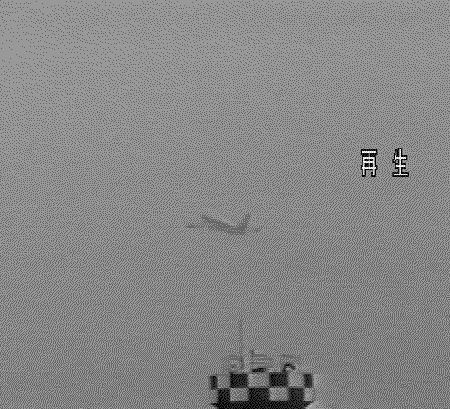 |
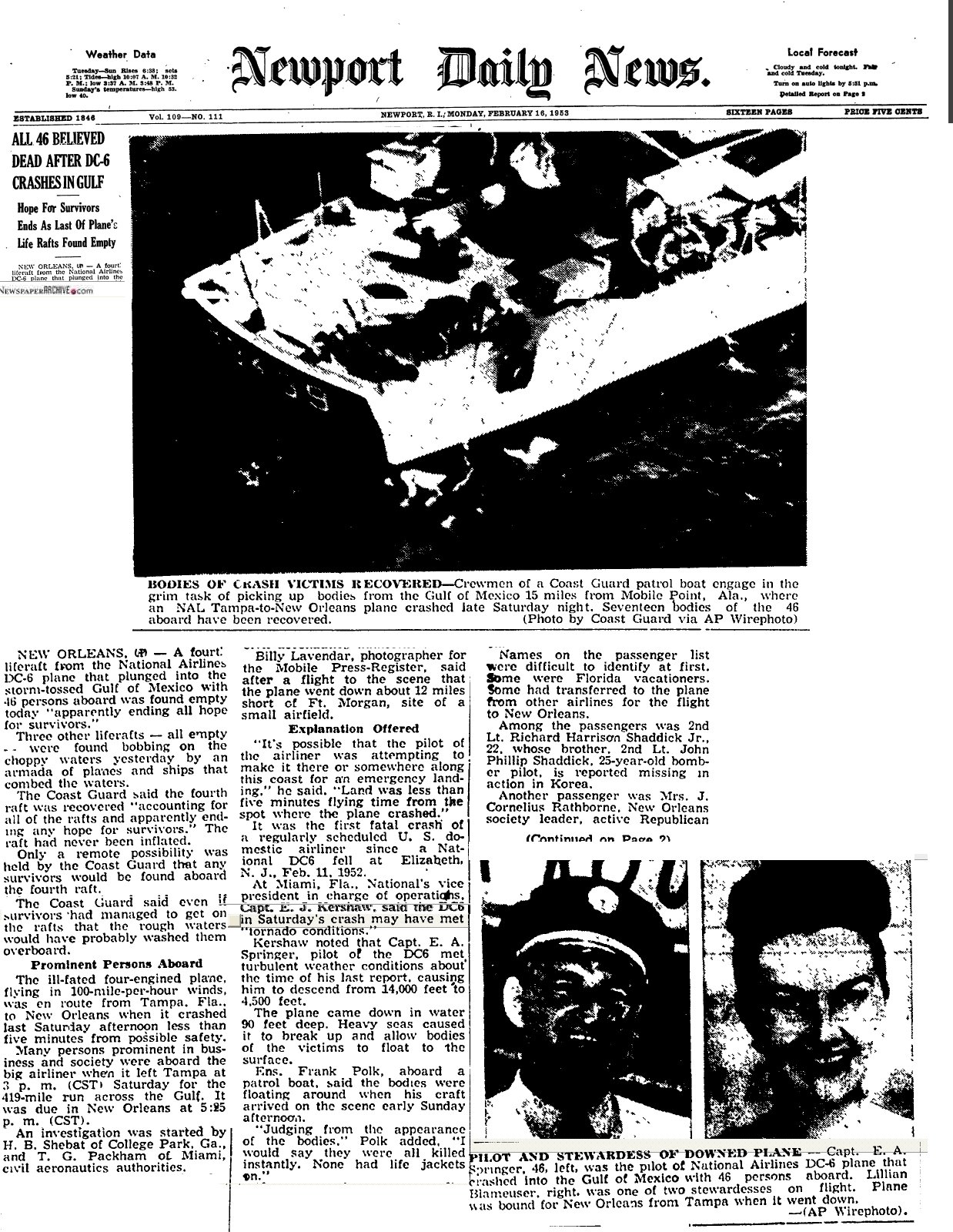
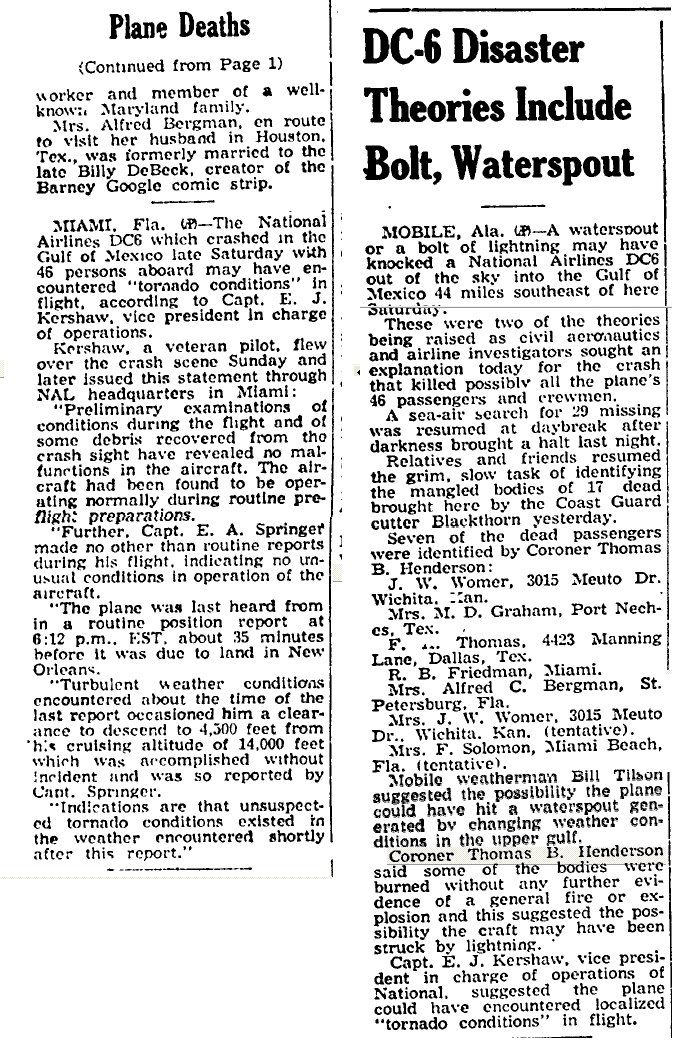
|
AUDIO TRANSCRIPT FROM NEWSREEL* DATED Feb. 19,
1953:
"This is the grim aftermath of a transport plane crash in the Gulf
of Mexico which took the lives of 46 persons.
Rescue vessels collect belongings of passengers
and crewmembers salvaged from the sea.
The airliner, presumably caught in a cyclone,
plummeted into the water a short distance from the Alabama coast. It
was located in 90 feet of water.
Eleven bodies were recovered as they floated
free of the plane. The transport was on a flight from Tampa to New Orleans
over the Gulf when disaster struck.
41 passengers and 5 crewmembers perished as the
plane disintegrated, struck the water with terrific force and tragic
results".
NEWSREEL TRANSCRIPT & PHOTO SOURCE:
In the age before televison, people saw the news
every week in their neighborhood movie theater, in the newsreels which
were shown with every feature film. These short news films were produced
by the Big Five Hollywood studios and typically contained six or seven
stories, each of which were usually one or two minutes in length, and
covered politics, sports, fashions and whatever other major news story
might be of interest to the movie audience and would encourage them
to keep them coming back every week. The newsreel which covered the
crash of National Flight 470 ylelded the photos which follow here. The
scenes were captured from a DVD made by History Professor Steven Schoenherr
of the University of San Diego. An invaluable collection of these visual
historical documents were painstakingly reproduced from reference cassettes
at the National Archives in College Park MD from the Universal Newsreel
gift collection made to the federal government in 1970 of 30 million
feet of film from 1929-67. In living black-and-white, they offer a fascinating
and unique view of an era when motion pictures defined our culture.
http://history.sandiego.edu/gen/newsreels/
IT'S INTERESTING TO NOTE that neither the airline name nor the flight
number were mentioned in the newsreel, whose announcer described the
aircraft as a "transport plane", a term more suggestive of
a military flight, instead of identifying the aircraft as a "passenger"
plane or "commercial airline flight".
|
 |
U.S. Coast Guard Cutter Blackthorn arrives and personnel
begin offloading the first eleven bodies recovered from the Gulf of Mexico.
Coast Guard personnel load body bags onto wheeled stretchers and into one
of six hearse's dispatched to the dock to await the Blackthorn's heartbreaking
cargo.
Bits of plane wreckage, assorted baggage
and personal effects which floated to the surface and was recovered
by the Blackthorn is transferred from the cutter's deck and stacked on the dock
to await review by crash investigators.
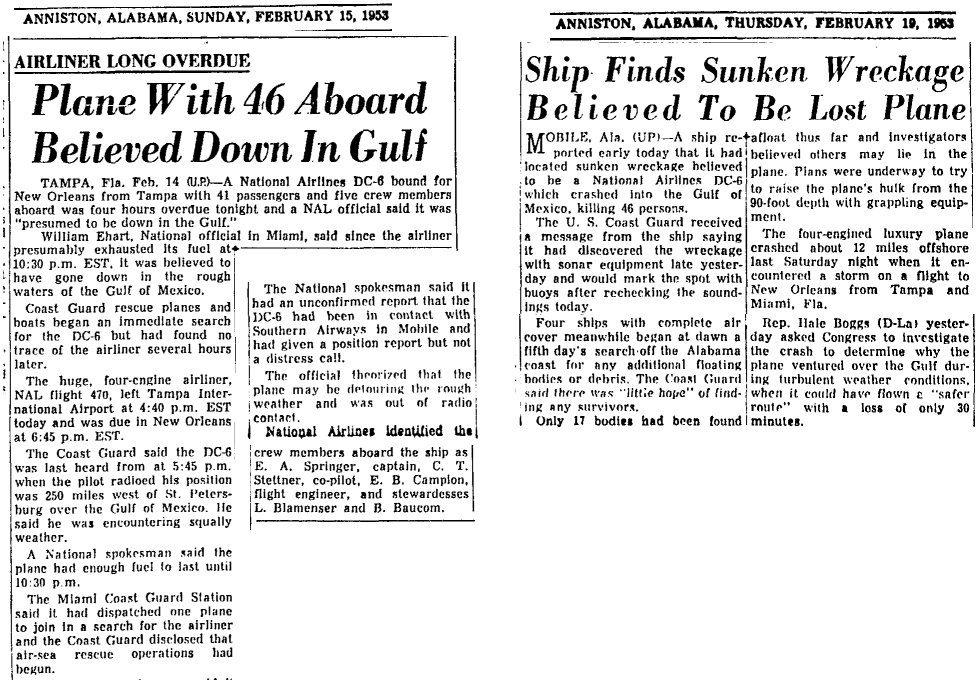
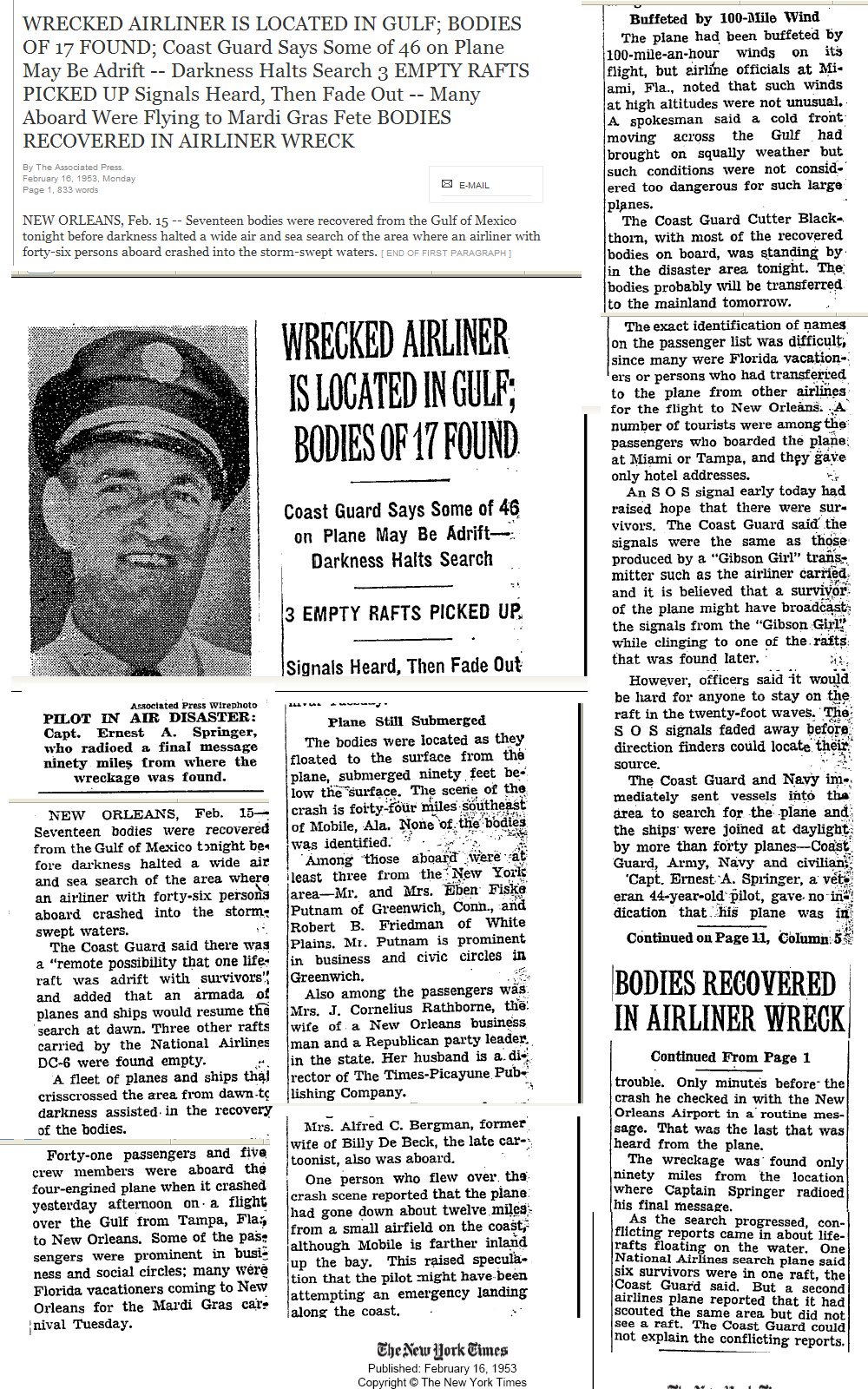
|
Silence from the Gulf
Time Magazine
Monday, Feb. 23, 1953
Both the U.S. Weather Bureau and National Airlines weather information
service expected stormy weather in the Gulf of Mexico as National's
Flight 470 left Miami for Tampa and New Orleans at 3:16 E.S.T. one afternoon
last week. There was a low-pressure area over the Gulf, a cold front
was moving out from Texas, and small-craft warnings were flying along
the coast. But the weather was expected to remain well within the "limits
of operating conditions" for the four-engined DC-6. Its captain,
Ernest A. Springer, was a 44-year-old veteran of airline operation.
National had safely flown the tri-city route 9,978 times.
The big plane made a routine landing at Tampa and
took off again at 4:40 with 41 passengers—many of them holiday
travelers bound for the Mardi Gras. It was due in New Orleans at 5:45
C.S.T., but Flight 470 was never completed. Captain Springer's last
radio report, at 5:12, gave no hint of danger. After that, attempts
to get in touch with the plane were answered only by a silence—silence
and the howl of sudden heavy winds which battered the shore line hard
enough to tear off roofs at Grand Isle, La.
During the night an operator at Mobile's Radio Station
WKRG picked up what he thought was an S O S message, possibly from a
hand-cranked "Gibson Girl" transmitter of the type used on
life rafts. As a great sea-air search got underway the next morning,
one of the 20-odd planes which took part sighted what seemed to be a
raft, with six people clinging to it. But they were never seen again.
A 20-ft. sea was running, and it seemed doubtful that survivors could
cling to a raft for long.
Less than 30 miles off the Alabama coast, the searchers
found bits & pieces of wreckage. The DC-6 was down in 100 feet of
water; during the day seventeen bodies floated to the surface and were
recovered. There seemed to be no doubt that all 46 people aboard had
perished.
|
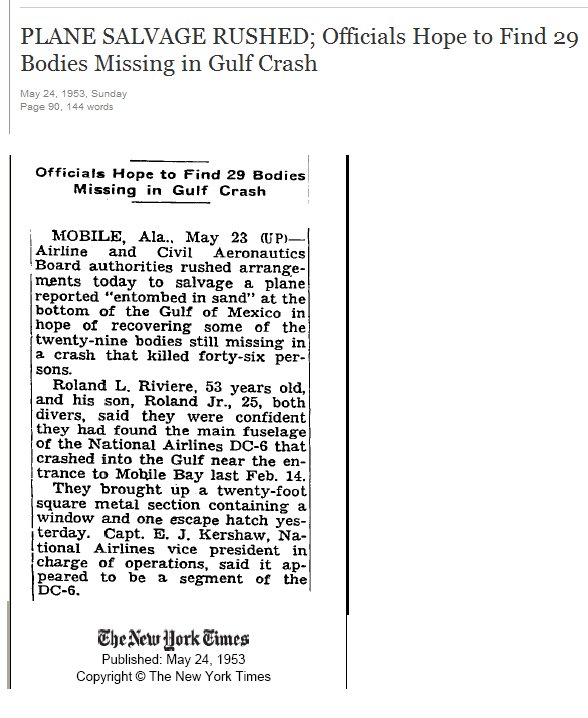
|
|
ACCIDENT DESCRIPTION
Status: Final
Date: 14 FEB 1953
Time: 17:10
Type: Douglas DC-6
Operator: National Airlines
Registration: N90893
C/n / msn: 43057/73
First flight: 1947
Total airframe hrs: 15994
Engines: 4 Pratt & Whitney R-2800-CB16
Crew: Fatalities: 5 / Occupants: 5
Passengers: Fatalities: 41 / Occupants: 41
Total: Fatalities: 46 / Occupants: 46
Airplane damage: Written off
Airplane fate: Written off (damaged beyond repair)
Location: 35 km (21.9 mls) off Mobile, AL, USA [Gulf of Mexico]
(Atlantic Ocean)
Phase: En route (ENR)
Nature: Domestic Scheduled Passenger
Departure airport: Miami International Airport with one stop
at Tampa International Airport, FL (TPA/KTPA), United States of America
Destination airport: New Orleans, LA United States of America
Flightnumber: 470
Narrative:
Flight 470 originated at Miami, for New Orleans, with one stop scheduled
at Tampa.
From Miami the VFR flight was uneventful, with departure at 14:15, with
the Tampa landing at 15:15. The flight took off from Tampa at 15:43
for an IFR flight across the Gulf of Mexico to New Orleans. Cruising
altitude was FL145. At 16:49, Flight 470 reported passing over NA-2
check point at 16:45 at 14,500 feet, and estimated being over NA-1 at
17:10. It also reported, "Thunderstorms all quadrants..."
Pensacola radio received and acknowledged this message, and advised
the flight of "severe turbulence" between NA-1 and New Orleans
as reported by a DC-6 crew that had landed ahead of Flight 470. At 16:54,
the flight advised Pensacola that it was reducing power because of turbulence
and five minutes later requested Air Route Traffic Control clearance
to descend from 14,500 feet to 4,500 feet. This was granted within a
minute or so. At 17:03, the Flight advised Pensacola of passing through
10,000 feet, and at 17:12, advised that it had reached 4,500 feet at
17:10. Pensacola repeated this message back to the flight and gave it
the 16:48 New Orleans special weather: measured 800 feet overcast, visibility
10 miles, wind north-northeast 25 mph, with gusts to 34, the altimeter
29.61; barometer unsteady. The flight acknowledged and there were no
further radio contacts. The aircraft had apparently crashed in the Gulf
of Mexico. Some wreckage and bodies were found the next day, but the
majority of the wreckage was found on May 20.
PROBABLE CAUSE: "The loss of control
followed by the in-flight failure and separation of portions of the
airframe structure while the aircraft was traversing an intense frontal-wave
type storm of extremely severe turbulence, the severity and location
of which the pilot had not been fully informed."
Sources:
» CAB File No. 1-0013
» ICAO Accident Digest Circular 39-AN/34 (36-49)
Summary: The aircraft crashed into the Gulf
of Mexico off Mobile, Alabama. The aircraft broke up in the turbulence
of a "frontal wave" storm after failure of the left wing. The loss of
control followed by the in-flight failure and separation of portions
of the airframe structure while the aircraft was traversing an intense
frontal-wave type storm of extremely severe turbulence, the severity
and location of which the pilot had not been fully informed.
|
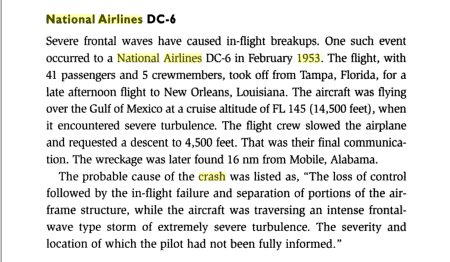
Misc.
Litigation Findings:
On February 14, 1953, National Airlines Flight 470, en route from Tampa
to New Orleans, met with winds of hurricane velocity and crashed in the
Gulf of Mexico near the Alabama shore. None of the 46 on board survived
the crash. It was unclear where the accident occurred; whether within
the territorial jurisdiction of Alabama, in which case the Alabama Wrongful
Death Act, 7 Alabama Code 123, was applicable and the district court had
jurisdiction because of diversity of citizenship, or on the high seas
beyond the jurisdiction of Alabama, in which case the Federal Death on
the High Seas Act, 46 U.S.C.A. 761-767, applied and jurisdiction lay in
admiralty.1 Claims under both statutes were joined and after a hearing
in which the evidence was limited to the situs of the accident, Judge
Levet, reaching the same result as had the jury which he termed 'advisory,'
correctly found that the accident occurred on the high seas more than
one marine league from the Alabama shore. The court, therefore, dismissed
the Alabama wrongful death action and proceeded in admiralty under the
Death on the High Seas Act to try the issue of damages, National
having admitted its liability for the accident.
|
ADDED 05/05/09
Additional passenger name/details have become available
over time:
From the website GenDisasters:
Events That Touched Our Ancestors Lives come these passenger names:
Martha Irene Besselieu (Stegall) from Miami Shores, FL
Nancy Nelson Huidekoper Rathborne, from Harvey Louisiana
I have original (yellowed and fragile) newspaper articles packed away, images
of which are displayed above, and I continue to add additional details about
this incident as they become available.
Additional information or photos which should be added
to his page, may be submitted for inclusion here.
In the subject line of your email
please reference Flight 470
|
 The
Butterfly Effect The
Butterfly Effect
*The term "butterfly effect" is related to the work of Edward Lorenz,
and is based in Chaos Theory and sensitive dependence upon initial
conditions. The idea that one butterfly could eventually have a
far-reaching ripple effect on subsequent historic events seems first
to have appeared in The Sound of Thunder, a short story about time
travel by Ray Bradbury, published in 1952, although Lorenz made
the term popular.
In 1961, Lorenz was
using a numerical computer model to rerun a weather prediction,
when, as a shortcut on a number in the sequence, he entered the
decimal .506 instead of entering the full .506127 the computer would
hold. The result was a completely different weather scenario. Lorenz
published his findings in a 1963 paper for the New York Academy
of Sciences noting that "One meteorologist remarked that if the
theory were correct, one flap of a seagull's wings could change
the course of weather forever." Later speeches and papers by Lorenz
used the more poetic butterfly.
The phrase The Butterfly
Effect refers to the idea that a butterfly's wings might create
tiny changes in the atmosphere that may ultimately alter the path
of a tornado or delay, accelerate or even prevent the occurrence
of a tornado in a certain location. The flapping wing represents
a small change in the initial condition of the system, which causes
a chain of events leading to large-scale alterations of events.
Had the butterfly not flapped its wings, the trajectory of the system
might have been vastly different. While the butterfly does not cause
the tornado, the flap of its wings is an essential part of the initial
conditions resulting in a tornado.
It is a thought-provoking
plot in fiction when presenting scenarios involving time travel
and "what if" scenarios, where one storyline diverges at the moment
of a seemingly minor event, resulting in two significantly different
outcomes.
|
What IF.....
There is a theory, that something as seemingly insignificant as
the flutter of a butterfly's wings can change the course of history.
This is the event which changed the
course of my own family's history.
What IF I could go back in time and
somehow prevent a simple airline reservation from being changed,
thereby preventing this from happening to my family, would I?
The sobering fact is this;
If it had not happened, My father would not have married the woman
who became my stepmother.
If it had not happened, My much loved youngest brother who became
a firefighter and EMT and helped save so many lives could not have
been born.
If it had not happened, Perhaps I would not have married so young.
If it had not happened, I might not have followed the same career
path.
If it had not happened, It's unlikely that I would have traveled
to the same places or met the same people or married the men I did,
to find myself where I am in life today.
If it had not happened, None of my children, none of my grandchildren,
none of the friends and family who are so dear to me, would be with
me today.
If it had not happened, I would not be here to compile the pages
which, at long last, might offer solace and a chance for closure,
for me, and for others who lost their loved ones on Flight 470.
The Butterfly Effect.
It was not my decision to make. It
was hers.
By making that decision, she led me
to all of you.
And this is how it happened:
|
|
The published passenger list noted only that a Mrs. E.
Loomis of Miami had been aboard the ill-fated flight.
Of all the newspaper articles which were published, just
one contained a glimpse, a mere three sentences which briefly touched upon the
human side of the story.
"The foredeck of the cutter Blackthorn was littered
with wreckage from the plane which plunged into the Gulf Saturday afternoon
with 46 passengers and crewmen.
The sodden debris was piled onto the dock for inspection by civil aeronautics
authorities.
Among the lot were 33 shoes, one of them a gold mesh evening slipper, apparently
never danced in."
One of the things which was never reported was that when
the authorities gave up their official search for Flight 470, my father, Earle
Prentice Loomis, along with families and friends of some of the other missing
passengers, ("Bebe" Reboso was one of those who joined my father),
hired shrimp boats to continue to drag grappling hooks in their search for the
remainder of the plane.
It is largely because of their efforts that the wreckage
was finally located and the fuselage recovered by the Blackthorn a full four
months after the plane went down.
My mother was actually booked on the earlier flight, which
arrived safely, but she called and changed her reservation to Flight 470, in
order to finish making a suit she planned to wear.
The Butterfly Effect*; One seemingly insignificant
change in plans and the world, as we know it, is altered forever.
When Dad arrived, the coroner who was in charge of identifying
the bodies noticed that my father was wearing a Masonic ring, He took Dad, a
brother Mason, aside and told him that he would prefer that Dad not go in to
view the bodies in an attempt to find my mother, because it was something that
would haunt him for the rest of his life. He had Dad describe my mother to him
instead, and subsequently advised that my mother, formerly a first runner up
in the Miss Florida pageant, was not amongst those whose bodies were recovered.
I eventually learned that a small, empty manicure kit with her initials EWL
embossed in the leather had floated to the surface and been found by searchers.
That was the only item of hers that was ever found. To the best of my knowledge
no other bodies, beyond the original 17, were ever recovered. At one point I
recall seeing photographs taken inside a hangar, of the aircraft reconstruction
using the pieces of the plane which were eventually recovered, but I was unable
to find those photographs amidst my father's effects after he passed away in
1992. Cynthia Loomis Gurin, Stuart, FL.
FLIGHT 470 LETTERS
After relating my connection to Flight 470 to my stepson
for a high school writing project he is working on, I searched the web to see
If I could find any information on the flight. It was then that I stumbled upon
your web site on Flight 470, and read of your connection to the flight. In reading
your story, I was chilled to the bone to hear how your mother had changed from
an earlier flight to the ill-fated Flight 470. I was chilled because my mother's
decision to change flights resulted in her taking the earlier flight, and thus
surviving and giving birth to me four years later. Back when I was about 12,
I found a letter that my mom had written to the FAA (or some federal agency,
I don't quite recall) concerning a flight she was on from Tampa to New Orleans
on 14 Feb 1953. In the letter she described how they flew though extreme turbulence
and how the passengers on the plane thought they would not make it. In fact,
the flight was so rough that it led to her having a miscarriage shortly thereafter.
When I asked her about the letter, she told me the following story. My mom and
dad had flown from New Orleans to Tampa to visit my father's sister. My dad
had to fly back early for work while my mom stayed for a few more days.
On the morning of her scheduled flight, she described feeling very uneasy. She
felt that she had to get home right away, and insisted, over family objections.
on changing her flight from Flight 470 to the flight preceding it. She did not
explain it as a feeling of doom if she took Flight 470, but rather as an overwhelming
sense that she needed to take an earlier flight so she could get home as soon
as possible. As it was, her flight was so rough that at the time she feared
her choice was going to prove fatal.
Instead, it proved to be a decision that saved her life, and let to the births
of my sister, me, and my younger brother. My mom had not told me the story until
I had found the letter she wrote. When I asked her about it, she was somewhat
reluctant to tell the story. I believe it was because she felt some sense of
guilt at having escaped the fate of the passengers on Flight 470. I remember
feeling stunned at how close I had come to not being born. As you say, it is
amazing how such seemingly small decisions can have such far reaching consequences.
Fate can be both kind and cruel. I don't know how to feel about two moms who
made two simple but different choices that proved to be so fateful. I am so
happy and grateful for the choice that my mom made, and so sad for the choice
your mom made. But you are right, their choices led us to where we are today.
In my case, it led to my very existence. In your case, it sounds like it has
led to much for which you are grateful, in spite of your great loss. I
wish you all the best, and thank you for honoring the memory of your mother,
and all the other passengers on Flight 470. Sincerely, Rick Florez
arflorez@mindspring.com
REPLY: Thank you most sincerely
for your letter, Rick. My father told me that he had felt a strong sense of
unease when he looked at the plane my mother had just boarded. My own mother
seemed to know as well that something was going to happen. She instructed my
grandmother, before she boarded the flight, that if something were to happen
to her she didn't want a funeral held, and she took my father aside to say,
with more than casual gravity, "Take care of my childen....I love them so".
I'm so glad your mother made the decision she did, Rick, and I thank you for
taking the time to share your story family's story with me.
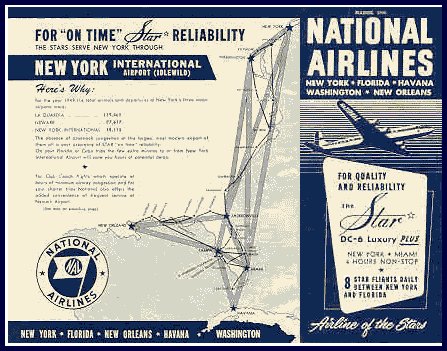











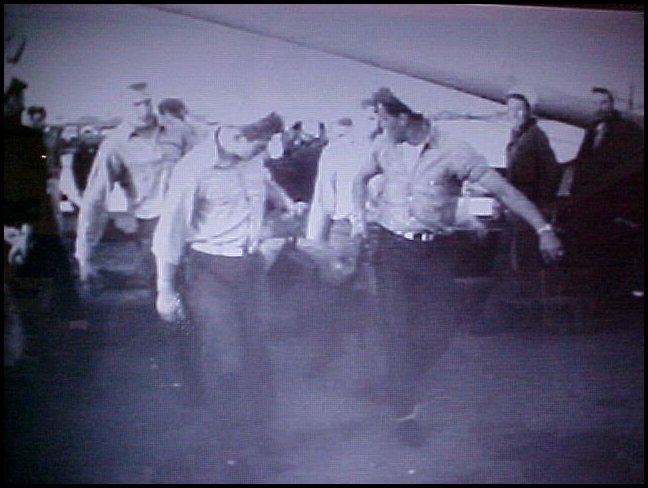
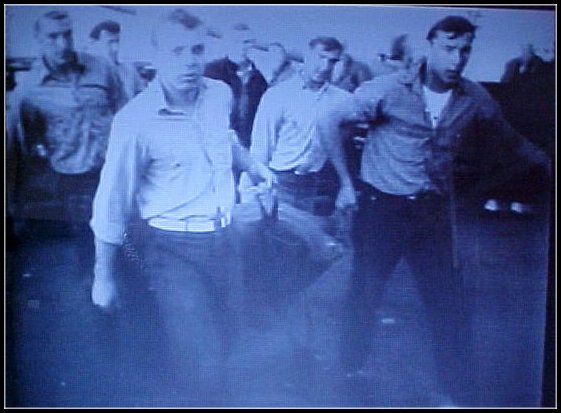
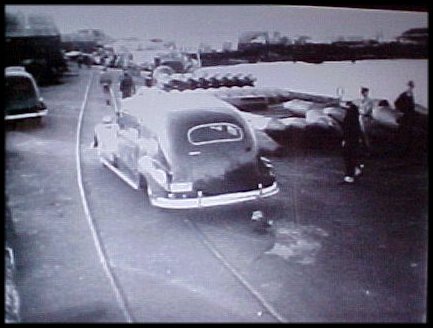
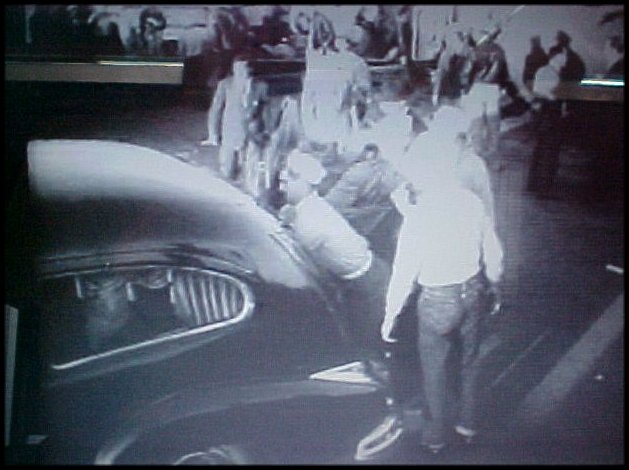
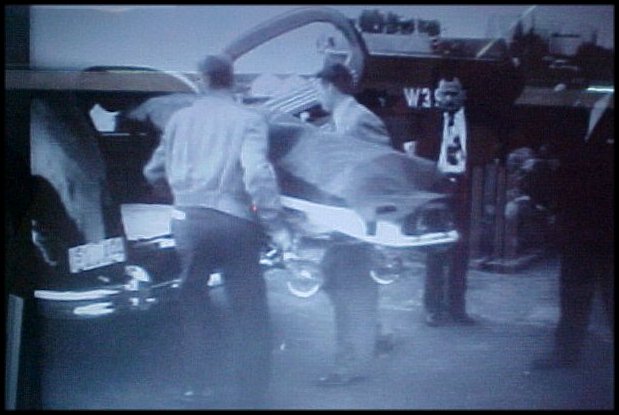
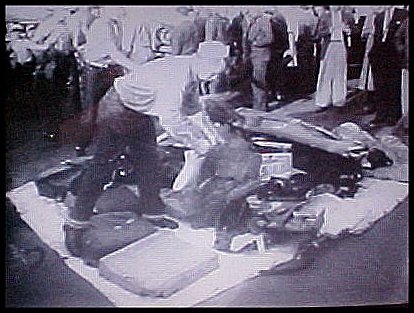
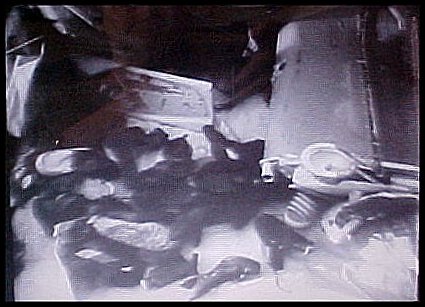
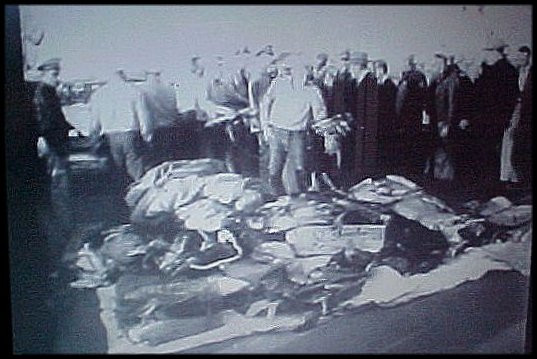
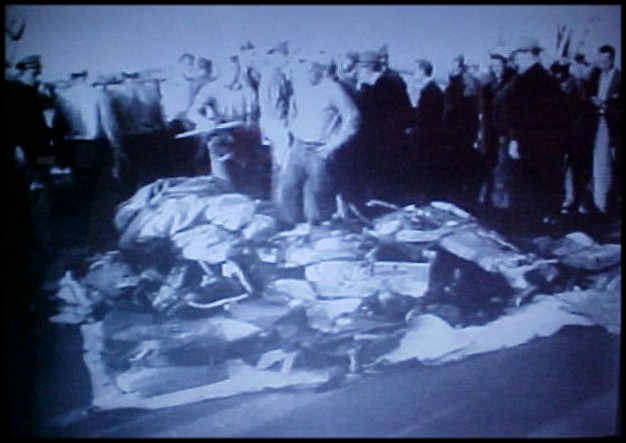


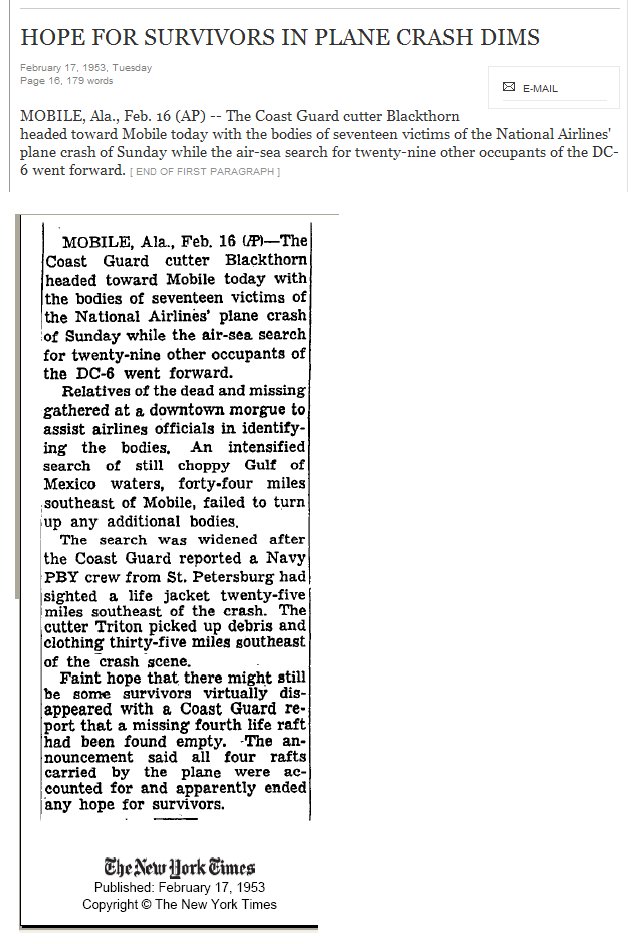
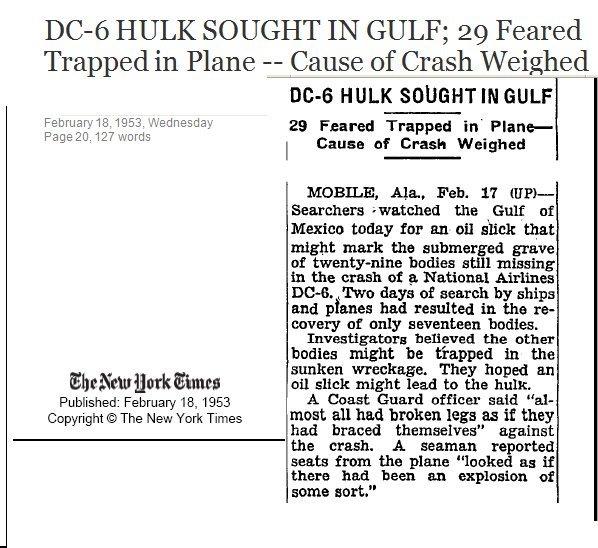


 The
Butterfly Effect
The
Butterfly Effect